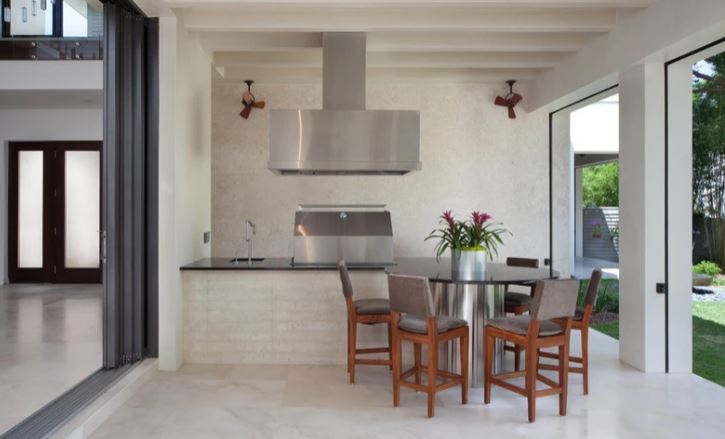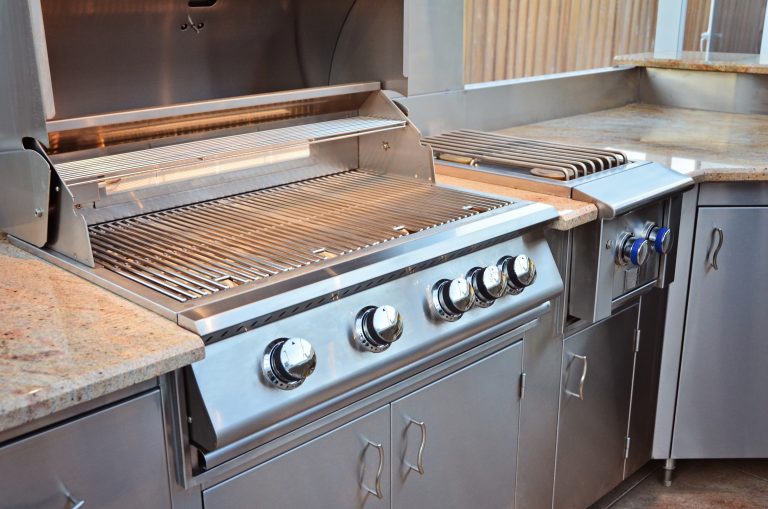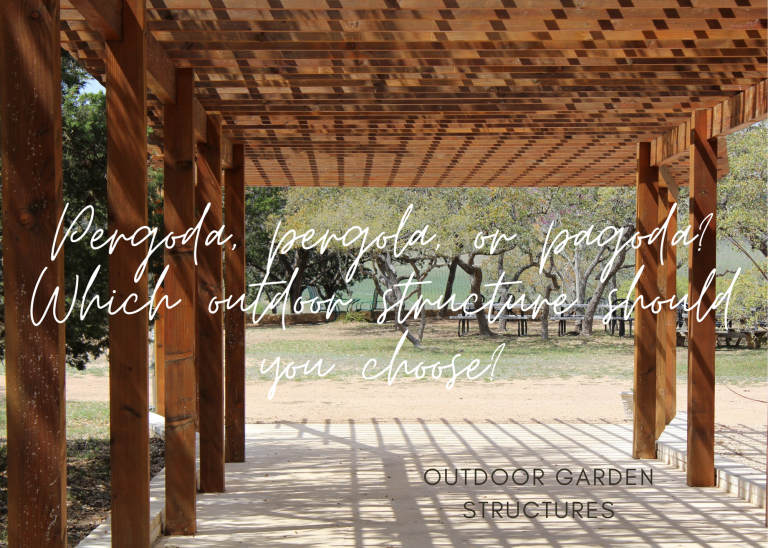7 Garden Fence Designs to Inspire Your Backyard

7 Garden Fence Designs That Time-Traveled from History to Inspire Your Backyard
Garden fences have shaped landscapes and homes for centuries. If you look around your garden or stroll through your neighborhood, you’ll probably spot garden fence designs that have roots stretching back hundreds, maybe even thousands, of years.

Discovering how traditional fence designs have made their way into modern gardens really makes you appreciate their beauty—and their purpose. Go on, explore these time-honored styles and their origins. You might find just the inspiration you need to add some classic charm to your own backyard.
Wattle Fence: Ancient woven branches creating rustic charm
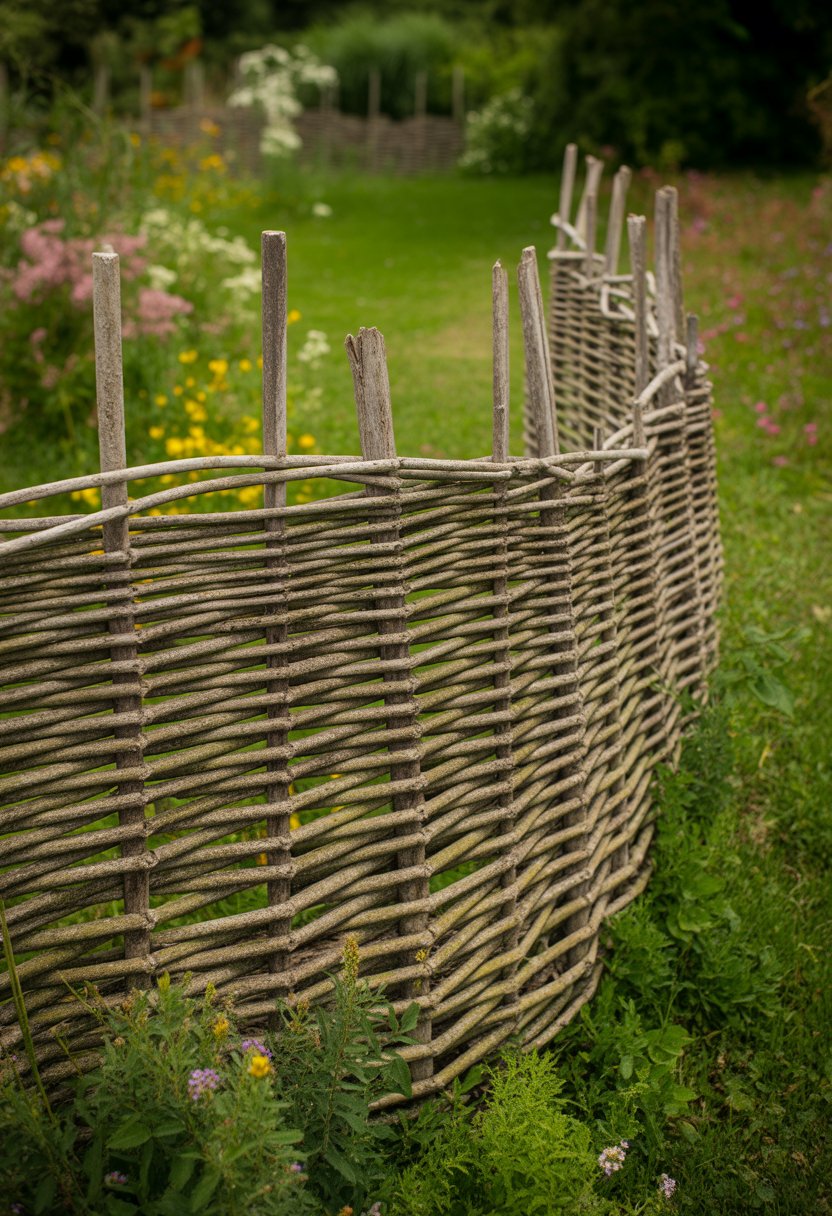
If you’re after a garden that looks both old-school and natural, a wattle fence is a solid pick. This fence style goes way, way back—think Neolithic times—and became a staple across the British Isles and Europe.
To make a wattle fence, you weave thin, bendy branches or twigs between upright wooden stakes. Willow and hazel work great because they’re flexible and easy to shape.
The result? A strong yet lightweight barrier that lets in air and a little sunlight. Wattle fences blend into the landscape, giving off a rustic vibe that just feels right among plants and trees.
People in the past used them to keep livestock in and to mark home areas. These days, you might use a wattle fence for garden beds or to section off your yard.
It’s a pretty eco-friendly option, too, since you can use branches from your own property or nearby. Lots of gardeners like the idea of using recycled or local materials.
Building one is a hands-on project. You can go as tall or as short as you want, depending on what you need. Every fence ends up with its own unique pattern of woven branches.
If you like a little character and don’t mind a bit of DIY, wattle fencing brings history and charm right into your backyard.
Picket Fence: Classic wooden design symbolizing cozy homes

When you picture a cozy home, it’s hard not to think of a white picket fence. This design has stuck around for ages, tied to peaceful neighborhoods and neat gardens.
The picket fence started in early colonial America as a straightforward way for families to mark their property. You’ll recognize it by its evenly spaced vertical boards—“pickets”—attached to horizontal rails.
Most traditional picket fences are wooden and painted white, which gives them that tidy, inviting look. Sometimes the tops are pointed or rounded for a little flair.
But it’s not just about looks. These fences kept pets or chickens in, while letting neighbors chat over them. The open design means you can see your yard and wave hello to folks passing by.
Modern picket fences come in materials like vinyl or metal, but wood is still a favorite. Some people add flower boxes or go bold with color for extra personality.
You’ll spot these fences framing cottage gardens or hugging suburban yards. You don’t have to stick with white, either; plenty of homeowners choose natural stains or bright shades to match their style.
If you want something that feels classic and personal, a picket fence is tough to beat. It marks your space and brings a warm, welcoming vibe to your home compared to other garden fence designs.
Rail Fence: Simple horizontal rails popular in colonial America
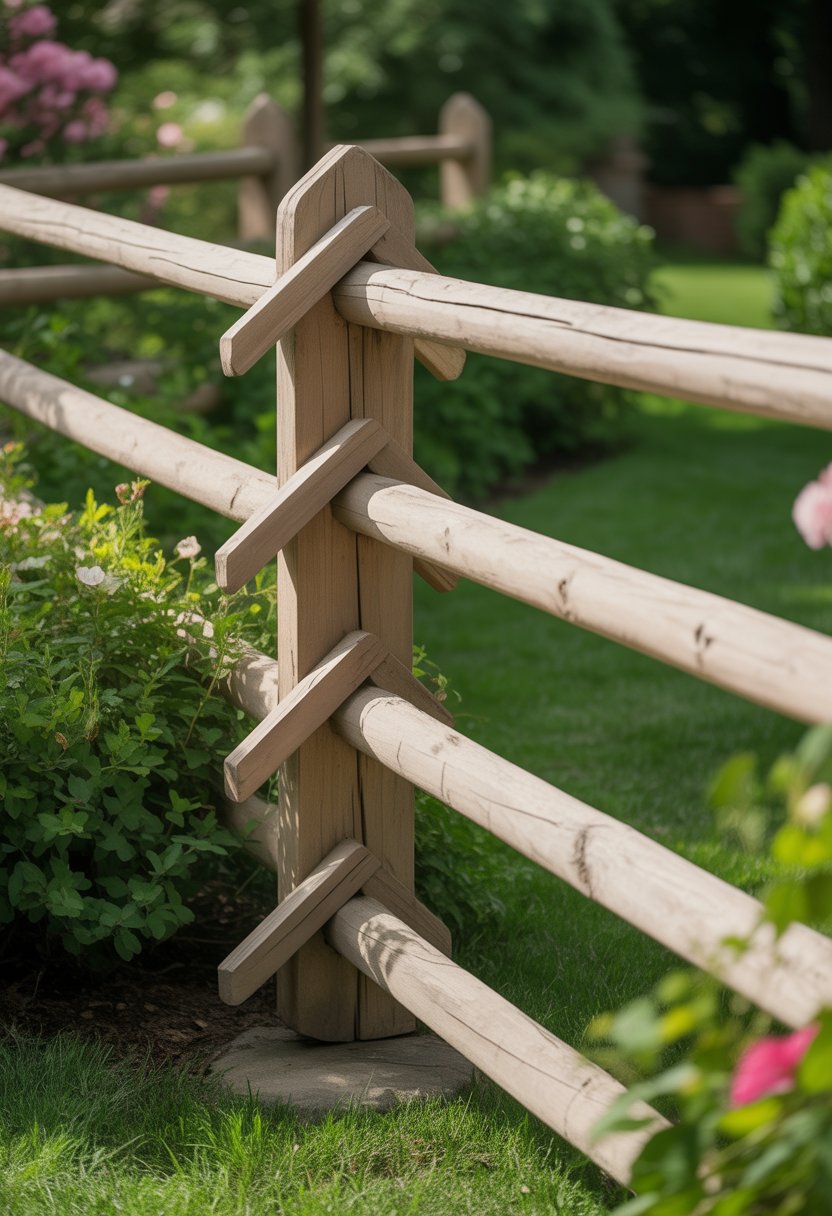
When you think of a classic country fence, the rail fence probably comes to mind. This design took off in colonial America because it was practical and made use of whatever wood settlers had on hand.
Rail fences—sometimes called split-rail or worm fences—use long wooden rails stacked horizontally between sturdy posts. Early versions didn’t need nails; the rails were laid in zigzags or angles, which helped them stand up without extra support.
They look rough and natural, since settlers often split logs by hand. Oak, cedar, and locust were popular for their durability outdoors.
These fences marked property lines and kept livestock where they belonged. The design worked well over uneven ground and was easy to fix if something broke.
Today, you’ll still see rail fences around gardens, parks, and farms. People like the simple, timeless style. You might even use one to give your yard a historical touch or to show off your veggie patch.
Modern rail fences often use treated wood or vinyl for longer life, but the basic look hasn’t changed much. They keep that open, welcoming feel and fit right in with both rural and suburban landscapes.
Ironwork Fence: Ornate Victorian-era metal craftsmanship

If you’re drawn to detailed, decorative touches, Victorian ironwork fences are hard to ignore. These fences took off in the mid-1800s, when new tech made it easier to shape iron into beautiful forms.
Victorian ironwork fences stand out with their fancy curls, pointed finials, and lacy patterns. Skilled workers heated and shaped iron by hand, then joined the pieces to make strong, delicate-looking fences.
Wrought iron was hand-forged, while cast iron was poured into molds—both allowed for those lovely swirling shapes and repeating patterns. Black or dark green paint was the norm.
Over the years, this particular garden fence designs popped up around homes, city parks, and public buildings. They kept people and pets safe, and added a touch of class to gardens and sidewalks.
Want a bit of Victorian style in your yard? Modern iron fences come in classic designs, but use materials that last longer and need less upkeep.
Pick from simple metal rods or go all-in with intricate scrolls for a bolder look. Black is still common, but dark grey and green are out there for a classic vibe.
Whether you want a low border for flowers or a tall fence for privacy, Victorian ironwork can really make your garden pop—without feeling stuffy or outdated.
Barbed Wire Fence: Revolutionary for ranching and security
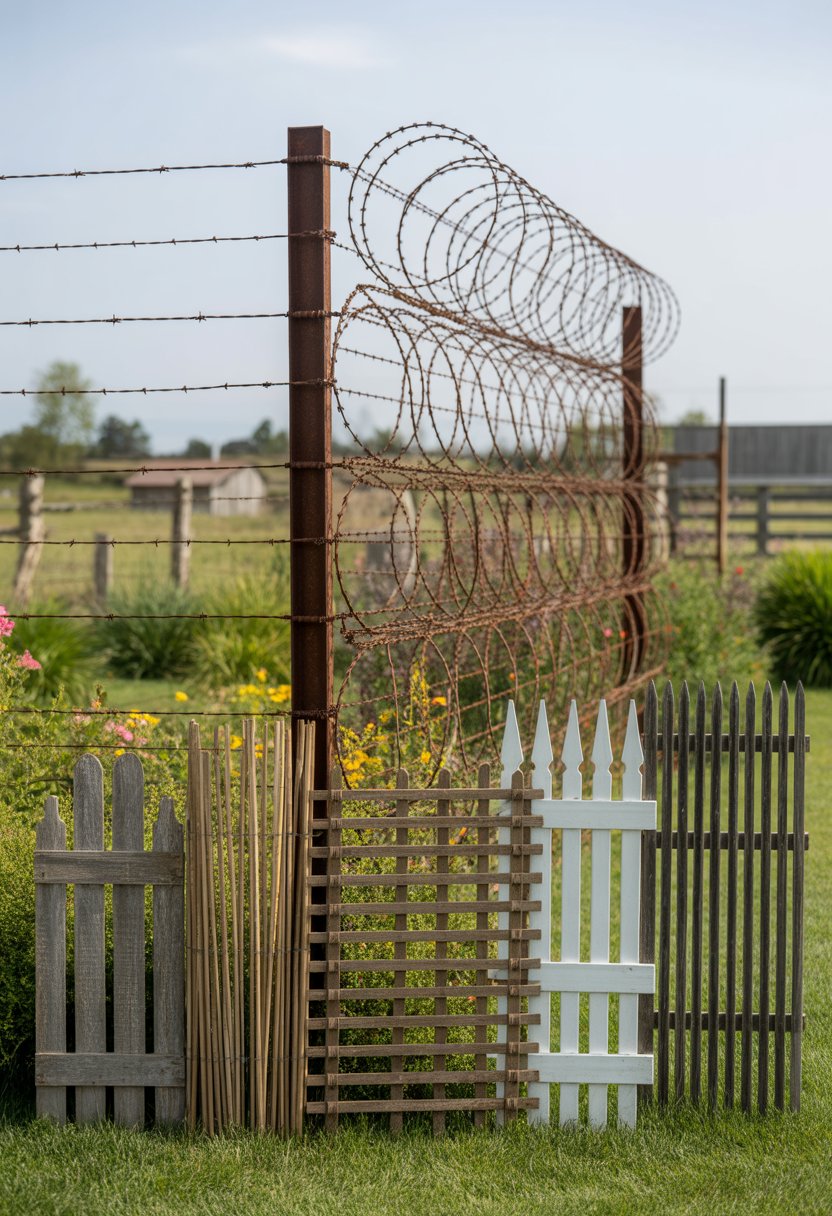
When you picture the American West, barbed wire fences probably spring to mind. They first showed up in the 1870s, thanks to inventors like Joseph Glidden, Jacob Haish, and Isaac Ellwood. Their work made it way easier for farmers and ranchers to protect their land.
Barbed wire is a straightforward design: steel wires twisted together, with sharp barbs spaced along the wire. Those points make it tough for animals or people to push through.
Before barbed wire, fencing was expensive and a real hassle, especially on the open prairie. Wood just didn’t cut it for big ranches.
Barbed wire changed the game. It was cheaper, covered huge areas, and worked well. Some ranchers hated it at first—they liked open grazing—but most came around. There were even “range wars” over cutting fences, but eventually, barbed wire became standard.
These days, you’ll see barbed wire everywhere: keeping livestock safe, protecting crops, and securing airports or military bases. Even solar farms and historical sites use it.
The barbed wire garden fence designs is simple, strong, and practical. It lets you build long fences with fewer materials and not much fuss. For over a hundred years, barbed wire has helped people define their property and keep important areas protected.
Espalier Trellis Fence: Functional and decorative plant support
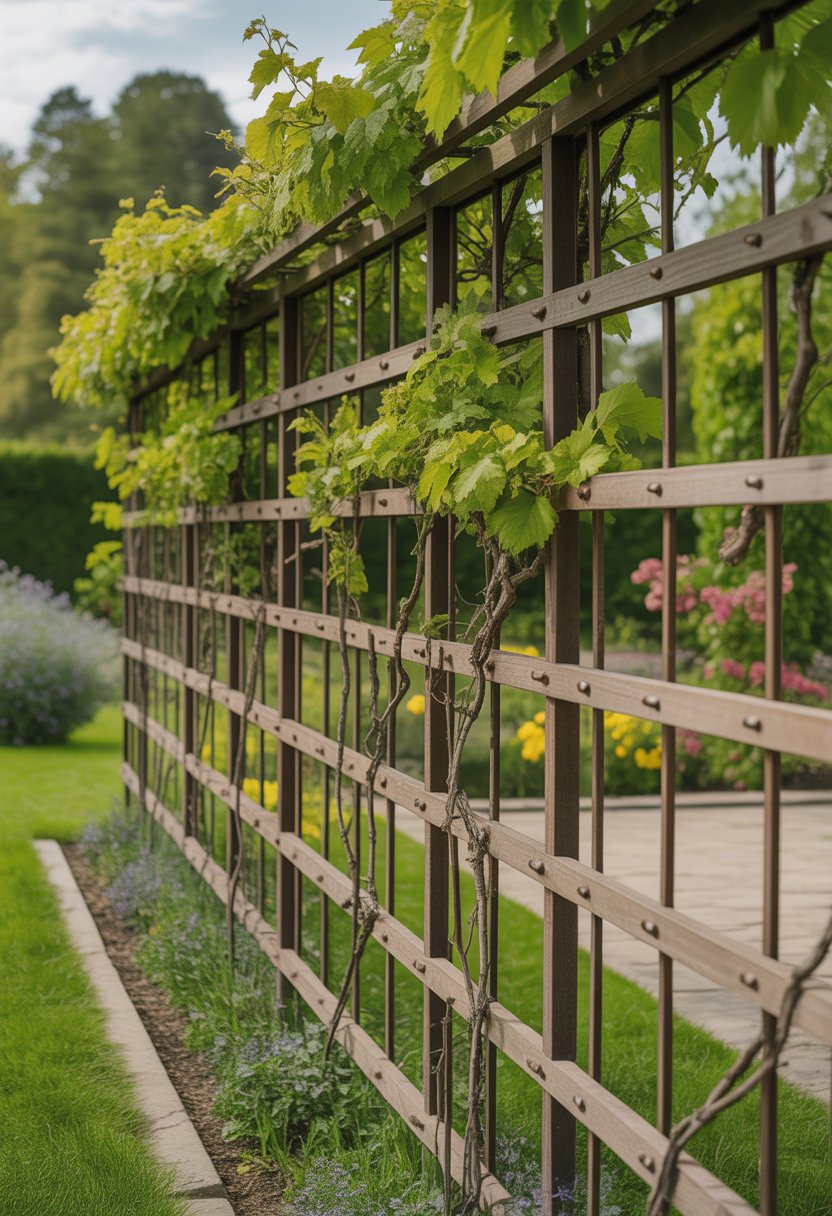
If you want a fence that’s actually useful and looks great, maybe give espalier trellis a shot. This style goes way back—think ancient Rome, when people started training trees to grow flat against walls.
During the Middle Ages in Europe, espalier techniques really caught on. Gardeners needed to save space and keep fruit buds safe from late frosts.
The espalier design let folks grow fruit trees in small spaces. It also made gardens look neat and, honestly, kind of fancy.
You make an espalier by shaping branches to grow in certain patterns, usually against a fence or wall. Tie and prune the branches so they grow sideways, not sticking out into the yard.
Common patterns? Horizontal, fan, or candelabra shapes. Some people get creative, but those are the classics.
Modern gardeners like espalier because it saves space. You can grow apples, pears, or even flowering vines where a regular tree wouldn’t fit.
The flat design works for small yards, city gardens, or along the side of the house. It’s practical, but it doesn’t feel boring.
An espalier trellis fence isn’t just about supporting plants. It can act as a living fence, giving you privacy and blocking out unwanted views.
At the same time, it’s basically a piece of garden art—something that stands out and makes people look twice. Maybe even snap a photo.
This kind of garden fence design covers a blank wall, dresses up a boring fence, or hides something you’d rather not see. With a bit of regular care, your espaliered plants keep their tidy shape and stay healthy.
Plus, picking fruit or trimming leaves gets way easier since everything’s right there within reach.
Stone Wall Fence: Timeless boundary from early civilizations

Stone wall fences have been around for thousands of years. People started building them in ancient times, using rocks they found nearby.
Early farmers and villagers needed strong boundaries to protect their crops and animals from wild animals and thieves. It just made sense to use what was on hand.
You can spot old stone walls in places like Mesopotamia, Egypt, and parts of Europe. Builders stacked stones without cement or mortar, relying on careful placement to keep the wall standing.
These fences were tough, but they also blended in with the landscape. No two stone walls look exactly alike—the rocks and the way they fit together change from place to place.
Most stone wall fences are low and wide, which helps them stay sturdy. In historic towns and countryside, you might still see stone fences that have lasted for centuries.
Some people learned special ways to build stone walls, like the Japanese craft called ano-zumi. That method, which started in the 1600s, shows just how precise stone stacking can get.
Today, you might want a stone wall fence for your garden because it just looks classic. It adds a sense of history and beauty you can’t really fake.
These fences work for marking property lines or keeping pets in the yard. They’re practical, but they also have a kind of quiet charm.
Modern stone fences can use old, weathered rocks or new stones cut to fit. Some folks even mix in other materials for a different vibe.
However you build it, a stone wall adds character—and, honestly, a little bit of magic—to any garden.
Understanding the Cultural Significance of Historic Garden Fences
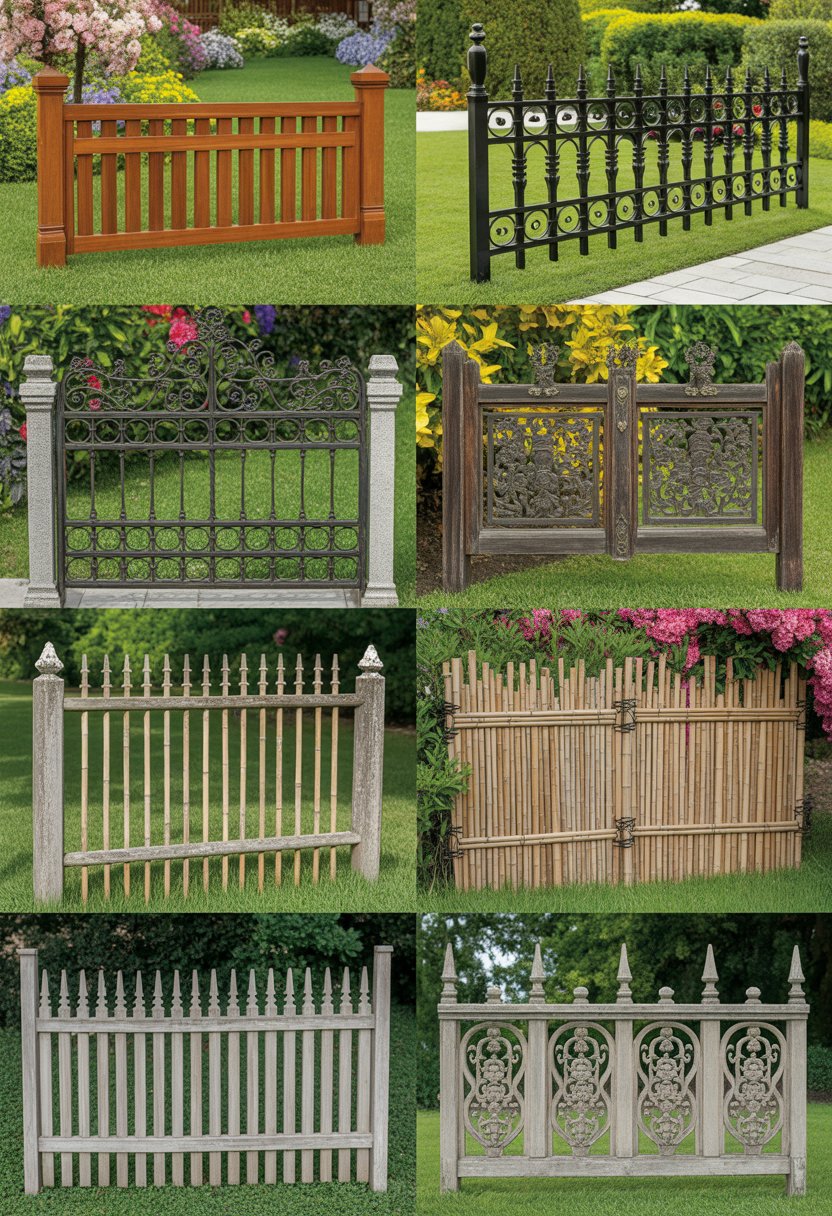
Garden fences have always been more than just barriers. Their designs reflect cultural values, local resources, and even social class.
Symbolism and Social Status
Garden fence designs often showed wealth and status. For example, ornate iron or stone fences around big estates in 18th- and 19th-century Europe were clear signs the owner had money for fancy materials.
Simpler wooden or wattle fences told a different story, usually marking the homes of working families. In colonial America, white picket fences became the go-to symbol of a tidy, well-off household.
Tall brick walls meant privacy and exclusivity, while low fences felt more welcoming. Some fences even had family crests or unique patterns to show off family roots.
Today, you still see modern fences inspired by these old designs. Decorative metalwork and painted wood are still popular for folks who want that classic, historic feel in their gardens—plus a bit of security.
Regional Influences on Design
The materials and styles of historic garden fences often depended on what people could find nearby. In England and parts of Europe, woven wattle fences made from willow or hazel branches were common because those woods grew everywhere.
In dry climates, stone walls or adobe fences made sense for sturdy, lasting borders. In America, settlers used split rails, pickets, or logs, especially where wood was easy to get.
Iron got more popular as blacksmithing improved and railways made moving heavy stuff easier. Different regions came up with their own styles—wrought iron with scrollwork in New Orleans, adobe fences in the Southwest, and so on.
Garden fences today still reflect these regional roots. You might see classic wood picket fences in New England or stone and ironwork in the Midwest and South.
Using local materials and styles just ties your garden to its history and landscape. There’s something satisfying about that, isn’t there?
Materials and Craftsmanship of the Past
Garden fences used to be made almost entirely by hand. Builders relied on wood, stone, plants, and other natural stuff they could find nearby.
The way fences were built—and how long they lasted—depended on the materials at hand and the skill of local builders. Sometimes, that’s what made all the difference.
Traditional Construction Methods
Early fences usually came from whatever was close by. In forested regions, wood was the go-to. Farmers used split rails or woven branches to create barriers for animals and mark land.
In rocky areas, people stacked stone walls without mortar, just fitting the rocks together carefully. Some designs, like woven wattle fences, were made by weaving flexible branches around upright posts.
Live hedges were also popular in Europe and, sometimes, early America. They gave a green, living barrier. Builders often used basic hand tools—axes, saws, that sort of thing.
Even simple fences took real skill. You had to set posts straight, fit stones tightly, or weave branches evenly. That craftsmanship gave fences character and made sure they’d last for years.
The origins of classic fence designs—like picket and post-and-rail—come from these practical building methods. You can still spot modern versions of these historic styles in gardens and yards today.
Garden Fence Designs’ Durability and Maintenance Insights
Old garden fences were built to last. They still needed regular care, though.
Wooden fences could rot. Builders lifted rails off the ground and picked rot-resistant wood like cedar or chestnut.
Stone fences needed almost no care. Sometimes, shifting ground meant you had to restack stones to keep the wall solid.
Hedge fences needed trimming and a lot of patience. It could take years before a hedge grew thick enough to keep animals out.
With regular upkeep, these fences could serve as strong, lasting barriers.
Modern fences, inspired by historic designs, use treated lumber, wire, or fabricated stone to boost durability. Now you can choose materials that need less long-term care.
Still, plenty of gardeners love the rustic look and hands-on feel of traditional fences. They’re willing to keep up with the occasional repair.




